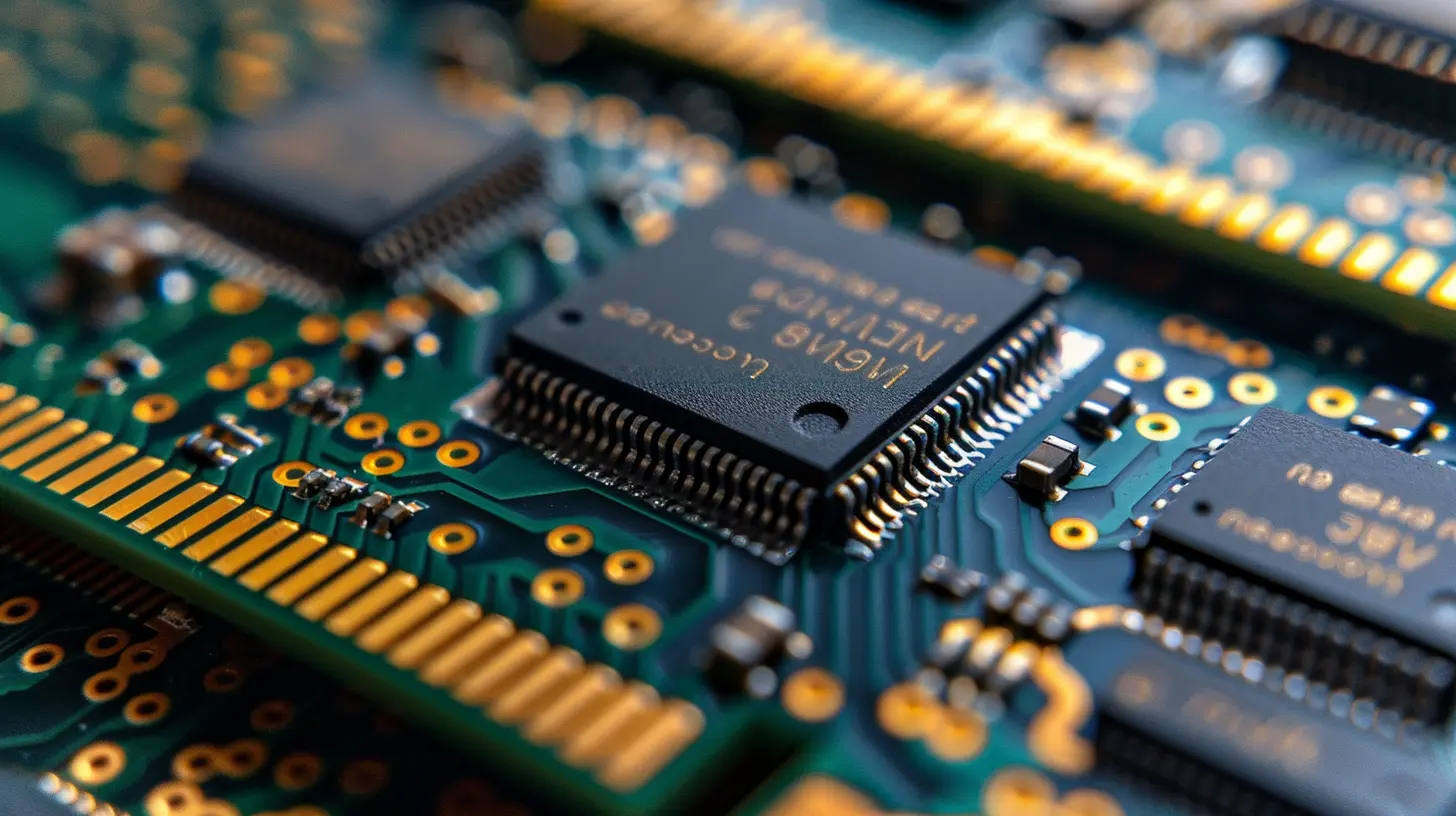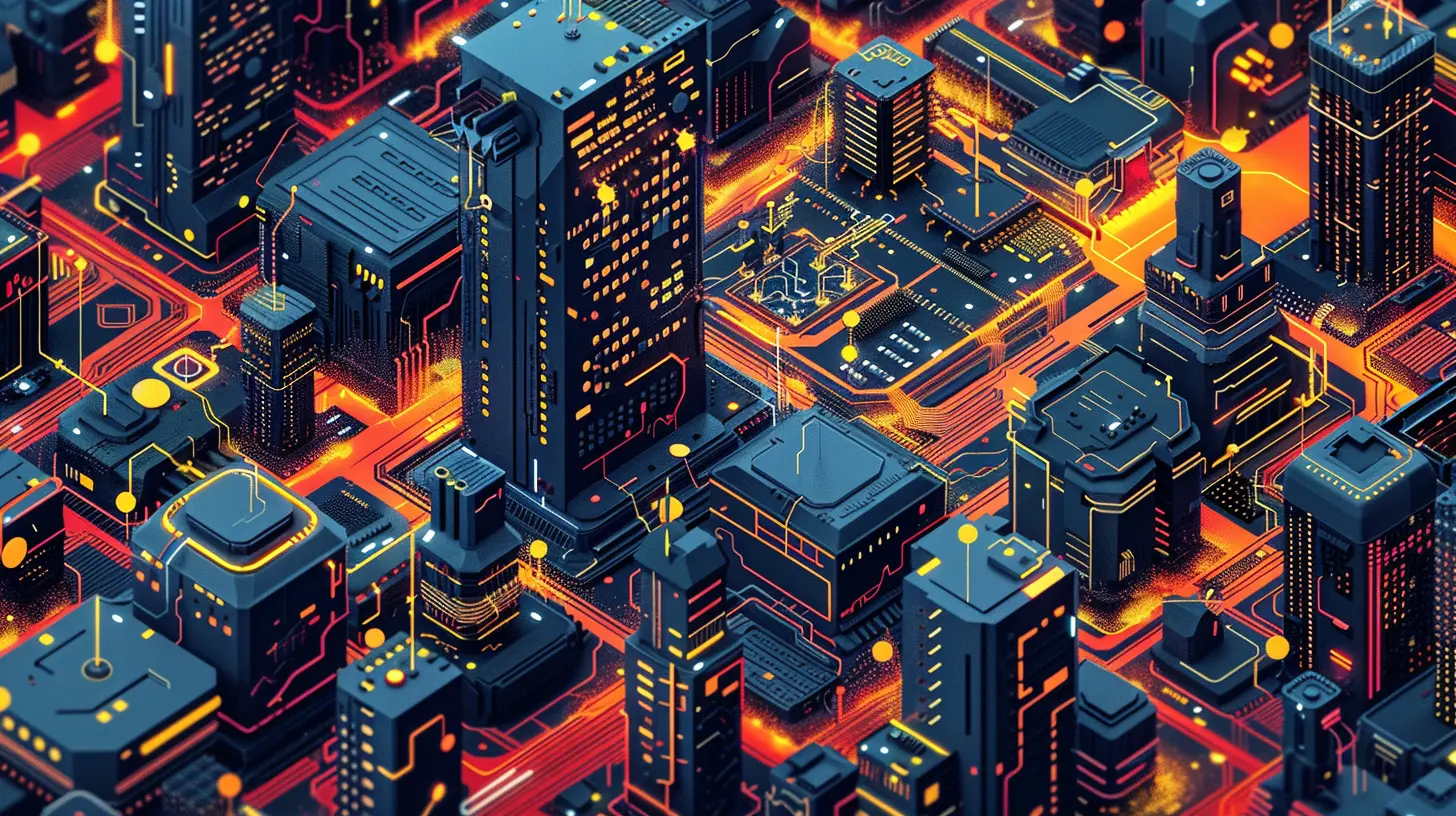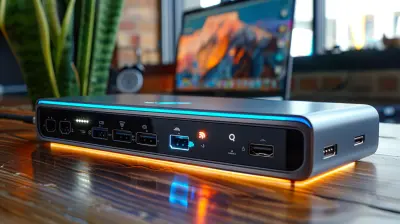How Tech Giants Are Tackling the Global Chip Shortage
27 August 2025
If you’ve tried getting your hands on the latest smartphone, gaming console, or even a new car lately, you’ve probably noticed something frustrating—everything’s either out of stock or has a months-long waitlist. That’s not just bad luck; you’ve bumped into the ripple effects of the global chip shortage.
Now, you might be wondering, “Why are we even out of chips? Aren’t these things tiny and made in high-tech factories?” Great question. It’s a mix of high demand, limited supply, and some seriously tangled global supply chains. But what’s more fascinating is how the big names in tech—the Googles, Apples, and Intels of the world—are responding.
Let’s break it down in plain English—a 360° view of how tech giants are tackling the global chip shortage, what’s causing it, and what it means for you and me.
🤯 First Off, What’s the Big Deal With Chips?
Chips—aka semiconductors or microchips—are kind of the unsung heroes of modern life. They're inside your phone, your car, your laptop, and even that fancy fridge that tells you when your milk’s expired. They’re what make tech... well, tech.So when there's a chip shortage, it’s like trying to bake cookies without flour. Everything grinds to a halt.
🧩 What Caused the Global Chip Shortage?
Let’s rewind a bit. Why is there even a chip shortage in the first place? It’s not just one thing. It’s like a perfect storm of supply chain chaos.1. COVID-19 Factory Shutdowns
Back in 2020, factories worldwide hit the brakes due to lockdowns. Chip manufacturing plants in Asia—where the majority of chips are made—were heavily impacted.2. Skyrocketing Demand
While factories were down, people stuck at home wanted more gadgets—laptops, gaming consoles, smart home devices—you name it. Business also shifted digital quickly, raising demand for servers and computing power.3. Just-in-Time Manufacturing
Many industries, especially automotive, rely on just-in-time orders to save money. So when demand came roaring back, they were caught flat-footed without enough chips on hand.4. Geopolitical Tensions
Strains between the U.S. and China made things worse. Sanctions, trade restrictions, and political moves slowed down the already-fragile logistics involved in chip production.
💡 So, How Are Tech Giants Responding?
Tech companies aren’t just sitting around hoping things will fix themselves. Nope. They’re going all-in to secure their futures. Here’s what’s happening behind the scenes.
🏗️ Building New Chip Factories (AKA Fabs)
Ever try baking a cake but realize your oven can only make one at a time? Same concept here. Most chip manufacturers are maxed out on capacity. That's why companies like Intel, TSMC, and Samsung are making massive investments in new manufacturing plants.Intel’s Big Leap
Intel, the American chip powerhouse, isn’t just upgrading its current facilities—they’re going global. Intel’s CEO Pat Gelsinger announced billions of dollars in investments to build new chip fabs in the U.S. and Europe. Places like Ohio and Germany are on the map for massive new Intel campuses.TSMC’s Expansion
Taiwan’s TSMC (the world’s largest contract chipmaker) is also expanding globally. They're building a massive new fab in Arizona to better serve U.S. clients and reduce dependency on Asian manufacturing.Samsung Joins the Race
Not wanting to be left behind, Samsung is building a $17 billion fab in Texas. They’re also pouring money into R&D to create more energy-efficient and powerful chips.This isn’t just about solving today's shortage—it’s future-proofing.
🤝 Partnerships & Strategic Alliances
Another smart move? Forming alliances. Many tech giants are teaming up with chipmakers to lock in their chip supply for the long run.Apple Making Bold Moves
Apple used to rely heavily on Intel, but not anymore. They're now designing their chips (hello, M1 & M2 chips) and working closely with TSMC to manufacture them. It's a strategic move to control their own destiny.Microsoft & Qualcomm
Microsoft has also been exploring in-house chip development, especially for its Azure cloud services. They're collaborating with Qualcomm and other partners to build custom chips optimized for AI and machine learning—two booming sectors.Amazon Web Services (AWS)
Amazon isn’t just about shopping—they’re in the chip game now too. AWS has developed the Graviton chip, optimized for cloud workloads. They’re cutting down dependency on outside suppliers big time.🔄 Rethinking Supply Chains
The pandemic exposed a ton of weaknesses in global supply chains. So, tech giants are getting smarter—and more localized.Bringing Manufacturing Back Home
Instead of relying solely on Asia, companies are “reshoring” manufacturing. That means building factories closer to home—whether it’s the U.S., Europe, or other regions—to reduce delays and dependencies.Inventory Overhauls
Instead of operating on razor-thin just-in-time inventories, many firms are now building up a buffer stock of chips. That way, if something goes wrong again (fingers crossed it doesn’t), they won’t be left empty-handed.🧠 Fueling Innovation & Chip Design
Beyond factories and logistics, innovation in chip design is another way to ease the shortage.Smaller, More Powerful Chips
Companies are racing to create smaller, more efficient chips that pack more power with less energy consumption. Think of fitting a Ferrari engine into a tiny go-kart frame. That means fewer materials needed per chip and better performance.AI-Powered Chips
With AI exploding in every corner of tech, companies are designing chips specifically for AI processing. NVIDIA is at the forefront here, and others are quickly catching up. These specialized chips are faster, smarter, and often easier to produce at scale.🌍 Government Involvement: Legislation & Funding
Tech giants aren’t doing this all alone. Governments are stepping in too.The U.S. CHIPS and Science Act
In 2022, the U.S. passed a $52 billion funding package aimed at boosting domestic chip production. Intel, TSMC, and others are now leveraging this financial support to fast-track construction and R&D.EU’s Chip Act
Europe isn’t sitting this one out. The EU rolled out its own set of initiatives to become more self-reliant by producing 20% of the world’s chips by 2030.When governments and tech companies align? Big things happen.
🔍 The Role of AI and Automation in Managing Shortages
Let’s not forget the digital side of things.Predictive Supply Chain Management
Tech companies are using machine learning to predict supply and demand more accurately. It’s like having a weather forecast for semiconductor needs, helping them prepare before trouble hits.Automated Manufacturing
Robotics and automation are helping speed up chip manufacturing. Automation reduces downtime, boosts yields, and makes chip production more efficient.⌛ When Will Things Get Back to Normal?
Now, the million-dollar question: when will the chip shortage end?Most experts and tech leaders believe that by 2024 to 2025, supply and demand will begin to balance out. These timelines depend on new factories coming online, smoother global logistics, and the slowdown of panic-buying and stockpiling.
So, we’re not out of the woods yet—but the light at the end of the tunnel is definitely getting brighter.
📲 What This Means For You (Yes, You!)
You're probably wondering how all this impacts your life.- Gadget prices may stay high for a while.
- New launches might get delayed or have limited availability.
- Older models might stick around longer, giving us more budget-friendly options.
- Upgrading your tech? It might be wise to plan ahead or wait for global supply to stabilize.
But here’s the good news: the massive investments being made now mean you’ll see faster, smarter, and more energy-efficient tech in the next few years. The future’s still bright—and blazing fast!
💬 Final Thoughts
This global chip shortage? It’s one of those once-in-a-generation wake-up calls. It exposed how interconnected (and fragile) our global systems are. But it also sparked a wave of innovation, cooperation, and long-overdue action.Tech giants are playing the long game. They’re investing, innovating, and collaborating like never before. So while the shortage has been a pain in the processor (pun intended), it’s also paving the way for a more resilient and exciting tech future.
We’re all living in a world run by chips. And thanks to these massive efforts, our high-tech lives aren’t just going to recover—they’re going to thrive.
all images in this post were generated using AI tools
Category:
Tech NewsAuthor:

Ugo Coleman
Discussion
rate this article
1 comments
Penelope Butler
This article provides a crucial perspective on how tech giants are innovating and collaborating to address the chip shortage, highlighting the industry's adaptability and resilience.
August 27, 2025 at 4:47 AM

Ugo Coleman
Thank you! I'm glad you found the article insightful. The collaboration and innovation among tech giants are indeed pivotal in navigating the chip shortage.


